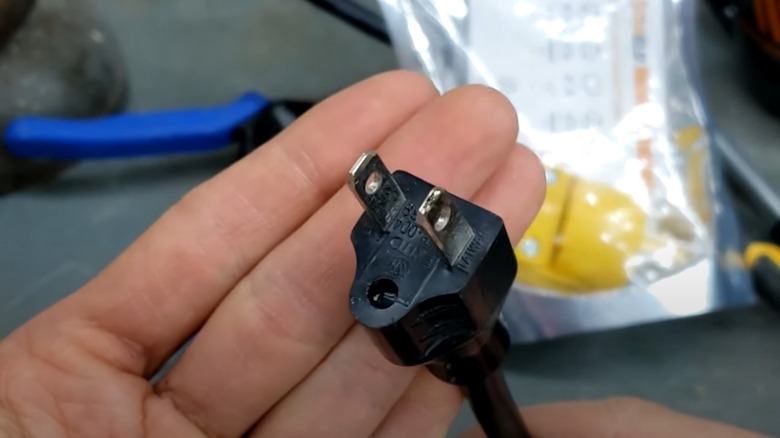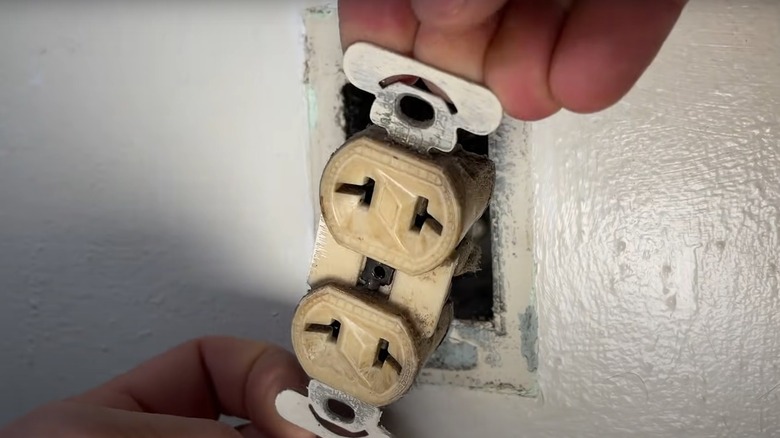How Safe Is Using A Three-Prong Plug With A Missing Ground?
If you have an older home, you may have outlets with slots for two prongs instead of three. The list of electrical outlets most commonly found in a modern house doesn't include two-prong outlets, as builders stopped using them in the 1960s. If you have a modern power cord going into an older outlet, you may wonder if using a three-prong plug with a missing ground post is safe.
It is generally unsafe to use an adapter or to alter the three prongs or blades on an electrical cord to make it fit into the older outlet with only two holes. The round blade underneath the two flat blades at the end of the power cord is a ground prong. Should an error occur with the operation of the electrical device that creates a surge of electricity, you could suffer an electrical shock if your grounding prong is not properly engaged in the outlet. This grounding blade protects you in the case of a potential, unexpected shock.
To accommodate a three-prong plug, a few people may use a clipper to remove the grounding blade from the end of the power cord plug to fit a two-slot outlet. However, most people use a three-slot adapter (or pigtail) that they insert into the two-slot outlet. They can then insert the three-prong plug into the adapter. You should avoid using plug adapters because you lose the grounding protection that a three-prong plug delivers. Learn more about how to protect yourself better when you have two-slot outlets instead of those with three slots.
Why isn't it safe to use a three-prong plug if you have two-slot outlets in your older home?
With a three-slot electrical outlet, you'll notice two flat slots and one rounded slot. The smaller flat slot carries the electrical power. The longer flat slot is the neutral side, which guides the power as it moves through the outlet. And the rounded slot is for the grounding plug.
This third prong reduces the risk of fire and electrical shock, protecting you without knowing it. It catches and directs any potential electrical shock to the ground before reaching you, so you might not even be aware it's working. It's possible that some appliances could build up a dangerous amount of excess voltage while working. Should the appliance experience a fault, this buildup could leave you with a severe electrical shock if you don't have a grounding prong. These types of shocks are more common than you may think.
The safest option is to swap a two-prong outlet for a three-prong outlet. Wiring the outlet correctly gives you the slot for the grounding prong that reduces the risk of suffering an electric shock. If a grounding wire is already in place behind the outlet to accommodate the new three-slot outlet, some homeowners may be able to tackle this process themselves. Otherwise, if you need to add a grounding wire inside the wall or if you don't want a DIY job, you can hire an electrician, which typically costs $150 to $300.

